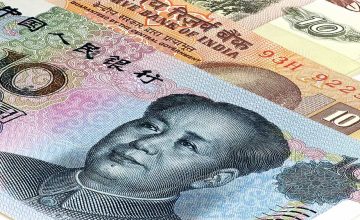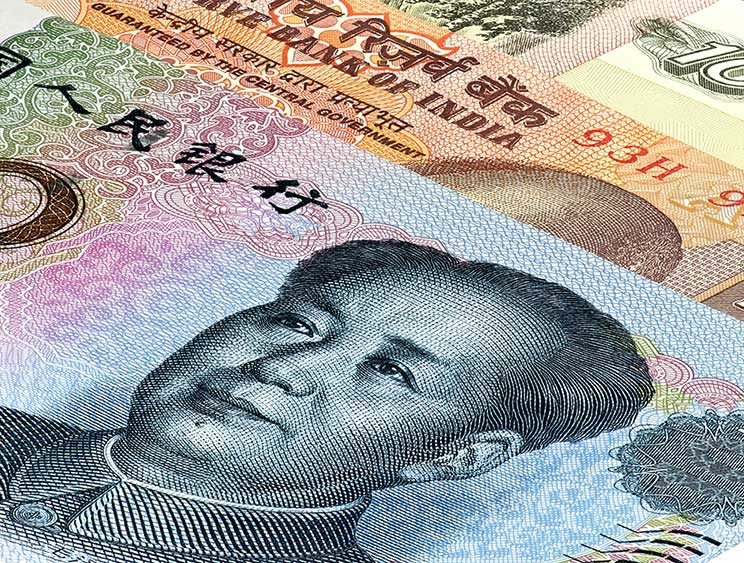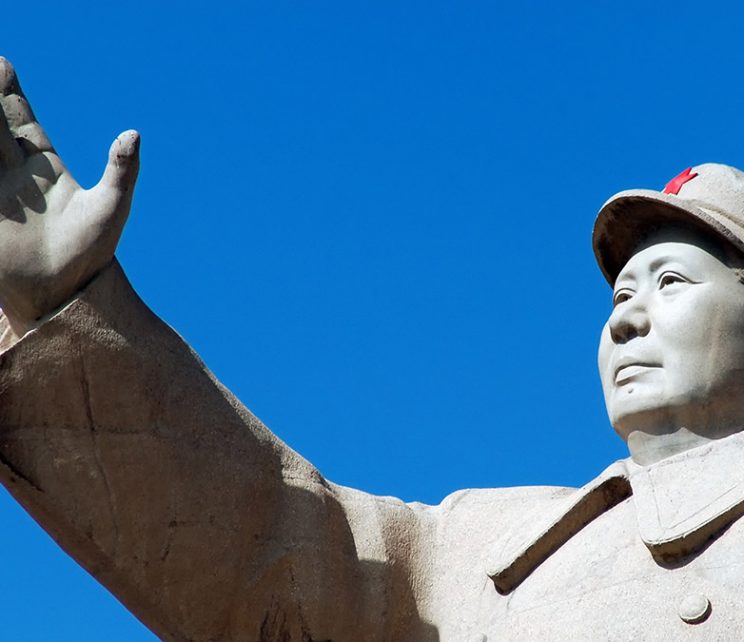
Mainstream Online Web Portal
LoginInvestors can view their accounts online via a secure web portal. After registering, you can access your account balances, periodical statements, tax statements, transaction histories and distribution statements / details.
Advisers will also have access to view their clients’ accounts online via the secure web portal.
The Point
Quick, actionable insights for investors
Emerging Markets

How a weaker US dollar could benefit Emerging Markets investors in 2023
The direction of the US dollar — and the capital flows that result from that — are a key (possibly the key) driver for the emerging markest equities asset class.
The US dollar has been significantly weaker in recent months, suggesting a peak was reached in October 2022.
To be clear, there have been previous short-term peaks and troughs in the dollar during broad upswings and downswings. (For example in March 2020 during the initial onset of COVID-19, after which the dollar weakened but remained in its uptrend).
But if the dollar has topped out (at a level similar to the top in 2002) — and 2023 and beyond are to be weak-dollar years — investors should bear in mind the highly positive implications for EM equity and for the more capital-sensitive markets within that asset class.
This article explains the relationship between the US dollar and the EM asset class — and what it means for investors in the year ahead.

Why advanced economies such as South Korea are classed as emerging markets
Quick view
Why advanced economies such as South Korea are classed as emerging markets
SOUTH Korea is one of the few countries in the world to develop its own supersonic jet fighter.
It’s a stable and mature democracy — and home to some world-leading technology companies.
So some investors might be surprised to find it’s classed as an emerging market, along with Taiwan and wealthy Gulf countries such as Saudi Arabia and the United Arab Emirates.
What is an emerging market? Who decides the definition of emerging equity markets?
It’s an enduring controversy. Some countries at the more advanced end of the emerging markets (EM) spectrum could arguably be classified as developed markets.
It’s useful for investors to understand how countries are classified as emerging markets as opposed to frontier (or pre-emerging markets) and developed markets.

Emerging Markets: Why some investors may benefit more than others as the tide turns
Quick view
Emerging Markets: Why some investors may benefit more than others as the tide turns
HIGHER US rates and a US dollar have recently curbed Emerging Markets returns, since they tend to depreciate other currencies, weaken US demand and draw capital out of EM economies.
As inflation comes under control, it’s expected that rate rises will decelerate and the US dollar will eventually weaken.
That’s good news for EM investors.
But there is another change that may benefit some emerging markets investors more than others: country-level factors are again becoming a powerful indicator of potential returns.
Investment managers that focus on top-down, country-level analysis should be able to take greater advantage of the changing conditions.

Signs of improvement for two big factors that drive Emerging Markets
Quick view
Signs of improvement for two big factors that drive Emerging Markets
A turning point for emerging markets equities is approaching as the drivers of recent weakness rapidly dissipate, believes Pendal’s James Syme.
The end of the US rate cycle is starting to come into view and a newly engaged China is beginning the process of restoring growth, says James, who co-manages Pendal Global Emerging markets Opportunities fund.
That leaves it increasingly likely that stronger returns from EM stocks are imminent, he says.
“The two big drivers of the difficult environment in emerging markets in the last 21 months all seem to be improving,” says James.
“Right now, you don’t want to be too underweight EM and you don’t want to be too underweight China.”

Beijing is changing policy on Covid and property. Is this bottom for China stocks?
Quick view
Beijing is changing policy on Covid and property. Is this bottom for China stocks?
China stocks surged after Beijing finally made market-friendly policy moves on Covid re-opening and property industry debt.
Is this bottom for Chinese equities?
Investors should broadly see this as a buying opportunity for the best-positioned Chinese companies, says Pendal emerging markets manager James Syme.
“We essentially believe China’s policy choices in the past two years broke its economy and equity market. We may now be seeing the beginning of changes that are needed to fix this.
“We have very significantly reduced our underweight position in China.”
Some sectors remain unattractive though, he cautions. Avoid state-owned banks, private-sector property developers and tech giants with poor corporate governance.

Why we’re seeing a change in leadership among Emerging Markets countries
Quick view
Why we’re seeing a change in leadership among Emerging Markets countries

Emerging markets: Is it time to buy Chinese stocks?
“It’s a question we’re getting asked by a lot of clients,” says Pendal Emerging Markets manager Paul Wimborne.
The MSCI China index has halved since its peak in February 2021. Falls of that magnitude in developed markets soon attract bargain hunters sowing the seeds of the next bull market. Does the same thesis hold for China?
“The answer to that question at the moment is no,” says Paul. “We think value in EM should be assessed very differently than the developed world.”
Companies such as Alibaba and China Mobile may look like they fit the value bill. But investors also need to be able to realise that value.
“In the developed world, you have three strong catalysts for the realisation of shareholder value: strong corporate governance, minority shareholder rights, and an entrenched culture of merger and acquisition activity.
“In the emerging world, we think these catalysts are often lacking.”

Emerging Markets: Why Indonesia is looking good right now
Quick view
Emerging Markets: Why Indonesia is looking good right now
Indonesian stocks could outperform over the next 18 months on the back of high commodity prices, strong domestic demographics and supportive monetary policy, says Pendal’s James Syme.
Brazil, Mexico and the oil-rich Middle East have been this year’s EM standouts — and Indonesia is well-placed to join that list says James.
As a major coal exporter Indonesia is benefitting from a shortfall in production and higher prices. Indonesia is also a leading exporter of palm oil, which is in demand due to disruptions to the edible oil trade from the Russia-Ukraine war.
The south-east Asian nation is also a significant exporter of metal ores, principally nickel.
And the world’s fourth most populous country is also rapidly urbanising with a burgeoning middle class.
“It has been a difficult year for a lot of countries, but Indonesia seems to have the right natural resource endowment and policy mix to relatively prosper,” says James.

Emerging markets: Countries likely to weather the storm
Quick view
Emerging markets: Countries likely to weather the storm
Declines in emerging market stocks over 2022 offer the potential for strong gains once the US rate-rise cycle peaks, says Pendal’s James Syme.
“Over the long run, in US dollars, emerging markets equities return a significant premium to the developed markets,” says James, who co-manages Pendal’s Global Emerging Markets Opportunities fund.
This year’s decline, while significant, is smaller than past sell-offs in emerging markets, says James.
EM investors will be watching for a change in direction from the US Fed and a weaker dollar; improvement in China’s economy and an easing in the Russia-Ukraine war.
As things turn around, investors should stick with markets that have best weathered the downturn – Latin America, South Africa, Southeast Asia and India.
“There are parts of the asset class that are doing OK – and the things you want to own when we get to the turn are the ones that are already winning.”

Emerging Markets: Is it time to invest in China again?
Quick view
Emerging Markets: Is it time to invest in China again?
Is it time to think about investing in China again?
The world’s second-biggest economy remains in the strictures of Covid-19, as much of the rest of the world emerges and battles with high inflation and interest rates.
But in recent weeks there have been signs that things might be turning economically, says James Syme, who co-manages Pendal Global Emerging Markets Opportunities fund.
“To the end of April there was a real sense of doom and gloom around the Chinese economy and assets.
“But what we saw in the May data was clear evidence that some parts of the Chinese economy are doing better.
“I think we need to see more evidence of a fully-fledged recovery. But we are starting to see some evidence of change.
“We are not at the point where you look at the data and say you need to be overweight China, with a highly cyclical portfolio.
“But the things you want to see are starting to emerge, and that’s a shift.”

Emerging Markets: where to find growth in a volatile world
Quick view
Emerging Markets: where to find growth in a volatile world
The sometimes-overlooked markets of Latin America are a bright spot in a world worried about inflation, interest rates and war, says Pendal’s James Syme.
“In the first four months of the year, when global EMs were down 12 per cent, Latin American stock markets rose 11 per cent,” James points out.
“And it’s more than just a market move — the underlying fundamentals are looking pretty good.”
Latin America often flies under the radar, partly because its commodity-exposed economies are subject to boom-and-bust cycles that can leave investors vulnerable to swift capital outflows.
But in the face of global uncertainty economies like Brazil and Mexico are doing well.
“We’ve seen GDP growth expectations revised upwards as economic data comes in relatively strongly,” says James, who co-manages Pendal Global Emerging Markets Opportunities fund.
“While valuation alone is not an investment case, most of MSCI LatAm looks pretty reasonably valued in a world where a lot of assets don’t.”

Emerging markets look well placed to weather hike cycle
Quick view
Emerging markets look well placed to weather hike cycle
As the US Fed lifts rates, conventional wisdom says EM economies must keep pace to avoid capital outflows, putting a dampener on their economies.
But this time might be different, says Pendal’s James Syme.
“Our view is that EMs have been hiking hard for some time now — and it actually looks like it’s the Fed that is significantly behind the curve.”
For example, Brazil’s central bank has raised policy interest rates nine times since the first post-pandemic hike in March 2021.
“The implication is that if the Fed has to do 400 basis points in hikes, that doesn’t mean Brazil is going to have to.” The story is similar in South Africa and Mexico, says James.
There’s still a question as to why the Fed is moving more slowly than emerging markets.
“Maybe the Fed is right — maybe there’s much more deflation coming than we can see in trailing data.
“But if that’s the case, we could be getting to the top of EM interest rate cycles. If that’s true, maybe we can start cutting rates again.”
Loading posts...
Loading posts...














